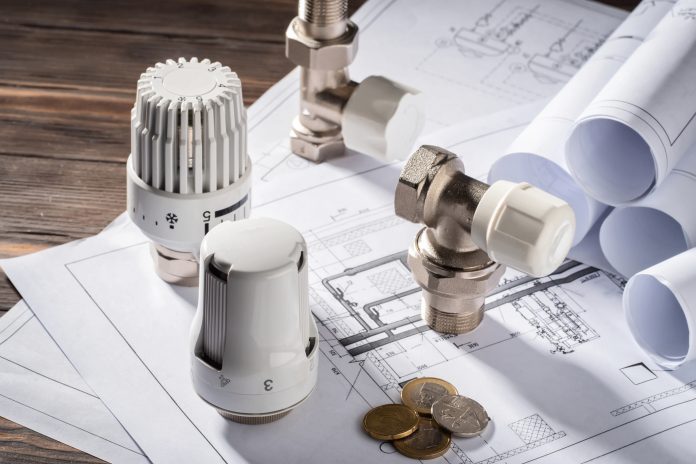Chris Caton, Product Director – Commercial, at Ideal Heating, explains how decarbonisation in the public sector is only at the beginning of its journey. Caton outlines how changing regulations are guiding organisations on their way
The public sector has a huge footprint in the UK, from our 32,000 schools to 7,000 GP surgeries. But if the country is to meet its net-zero ambitions, it’s imperative that we see decarbonisation in the public sector.
But the retrofit and rebuild of tens of thousands of public sector buildings will take a considered process, as well as time and money.
Revised regulations have set the pace for change for public sector bodies, while funds have come online to support their investments in low and zero-carbon initiatives. So, what does the public sector need to know about the journey towards decarbonisation?
Decarbonisation in the public sector: changing the “L” in Legislation
As the first step in this long transition, changes to UK building regulation Part L – the conservation of fuel and power – came into effect. These introduced greater targets than ever before to curb fuel usage and improve heating efficiency. Its focus is to reduce CO2 emissions by 31% for dwellings and 27% for other buildings – while providing a new emphasis on low-carbon heating systems.
This legislative change has highlighted that for non-dwellings, where feasible: “all parts of the system, including pipework and emitters, should be sized to allow the space heating system to operate effectively and in a manner that meets the heating needs of the building, at a maximum flow temperature of 55°C or lower.”
This temperature is key as it will drive change toward using condensing boilers, which can recover heat that is typically lost via the flue in non-condensing models while also recycling this heat for pre-heating purposes. This more efficient condensing process can only work when the temperature of the water returning to the boiler is less than 54°C.
We’re already seeing the Part L updates encourage broader change across the UK. Local authorities are looking to get a head start on becoming more energy-efficient while adhering to the new building regulations – and while seeking further reductions in carbon footprint through using renewable energy. Many local authorities are setting 2030 as their net-zero deadline.
Granting the chance for change
Naturally, such significant change will require careful budgeting for public sector organisations as they look to make the most cost-effective investments across their estates.
To support this, The Public Sector Decarbonisation Fund is set to share more than £1.4 billion in grants to aid changes to housing estates across the country by 2025. Currently, in its third phase, more than £625 million has already been allocated, working to support the aim of reducing carbon emissions from public sector buildings by 75% by 2037.
These rolling phases highlight the continued approach to long-term planning. It allows for local authorities and public sector bodies to take the time to put decarbonisation in the public sector plans together without the need to rush through planning and development for fear of missing funding, allowing for smarter transitions towards net zero.
![Ideal Heating Ecomod Commercial heat pump 32kW positioned outside a building[87]](https://www.openaccessgovernment.org/wp-content/uploads/2022/12/Ideal-Heating-Ecomod-Commercial-heat-pump-32kW-positioned-outside-a-building87-scaled.jpg)
Laying a foundation for better installation
Local authorities need to recognise the need for a methodical approach to their sustainable renovations to deliver the best outcomes and value for money.
Ensuring buildings are well insulated is essential for enabling low carbon heating solutions to do their job to the fullest.
This may mean taking an extended approach to installations in two-year stints. Over the first year, organisations must carry out a comprehensive assessment and improvement to their building’s fabric.
By ensuring that cladding, insulation, windows and other fixings are as insulative as possible, organisations can take an initial step forward to being more heat efficient, requiring less energy to keep buildings warm.
Following refurbishment, new heat systems such as heat pumps can be installed and work optimistically. Although on a protracted timeline, this process is essential as modern heating methods have been designed to work within insulated surroundings for the best effect.
The right tool in the right place
The UKs topography is as varied as its towns and cities, meaning that for local authorities supporting more densely urbanised environments, other effective heating options exist. For example, heat networks use singular heating sources to supply heat to buildings near greater efficiency and less usage than individual heating solutions.
Employing this kind of centralised heating for cities has already received significant support with the ability to provide heating across apartment blocks as well as larger commercial buildings.
Local authorities looking to include heat networks in their renovation plans are eligible to apply for extra funding under the Green Heat Network Fund. This £288 million three-year initiative supports the commercialisation and construction of new low and zero- carbon (LZC) heat networks (including the supply of cooling) and the retrofitting and expansion of existing heat networks.
We’ve also recently launched the ECOMOD range of commercial heat pumps, which delivers heating with exceptional energy efficiency, to help reduce larger buildings reliance on natural gas for heating.
A timeline for success
The journey to net-zero has always been long, with each new change representing a step ever closer to better ways of living and looking after the planet.
For public sector bodies, the time is now to come together and build out a framework for more carbon-efficient buildings, by securing new funding and building a foundation of support for when new methods of heating are installed.
As the government continues to make regulatory changes in how all sectors operate to become carbon neutral, local authorities have the chance to begin the journey towards providing a more sustainable future for the planet.
Armed with everything from efficient condensing boilers to commercial heat pumps, we provide the right heating technology at the right time for organisations net-zero transition.

This work is licensed under Creative Commons Attribution-NonCommercial-NoDerivatives 4.0 International.











